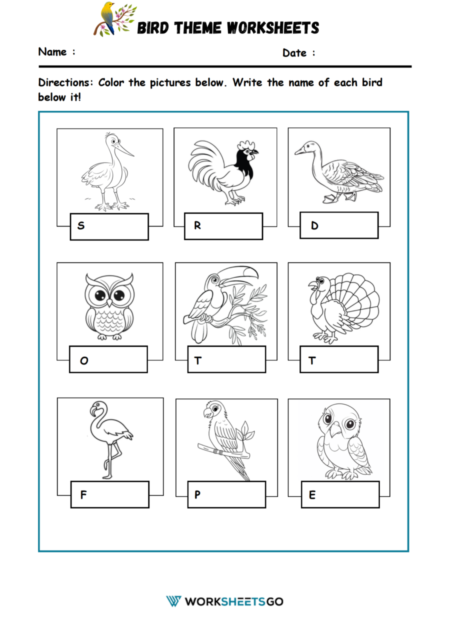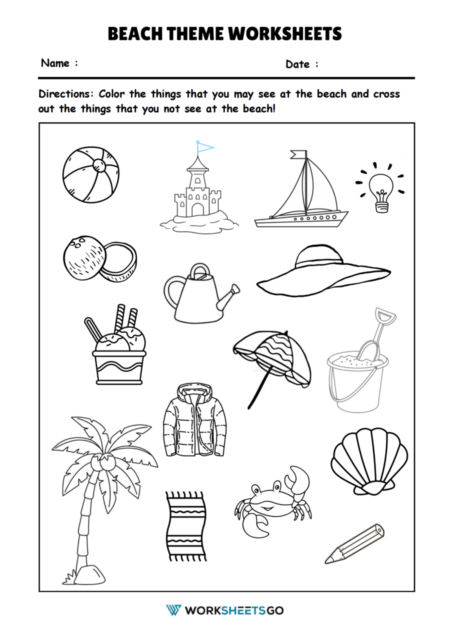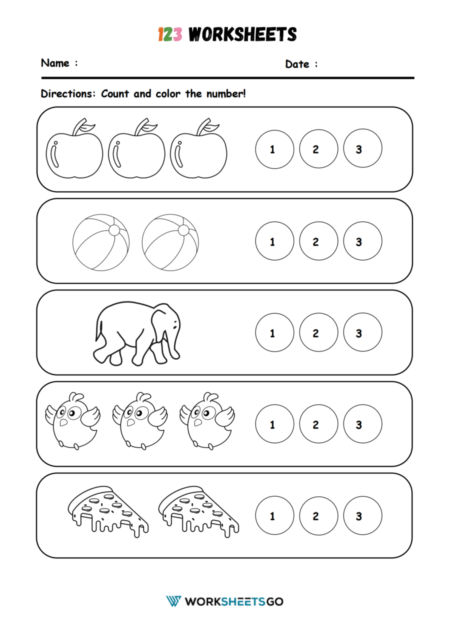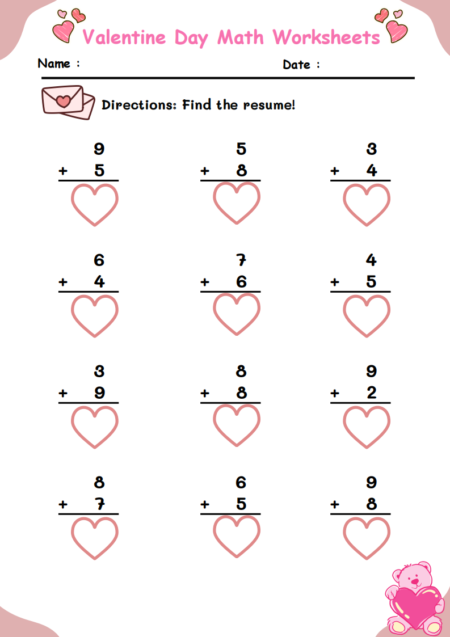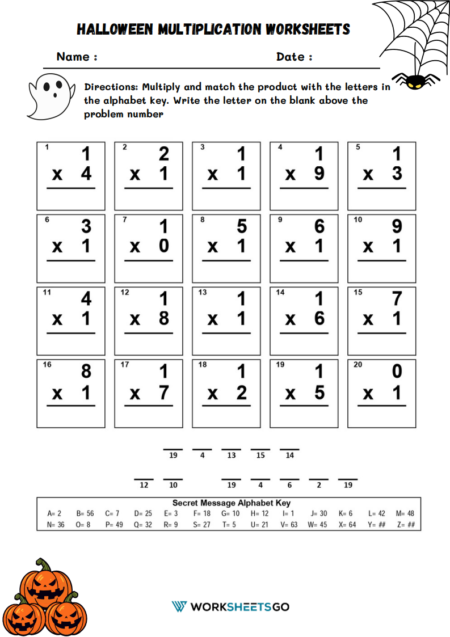Dive into the fascinating world of chemistry with our Periodic Trends Worksheets, designed to help students unlock the patterns and properties that define the elements of the periodic table. These worksheets provide a structured approach to exploring atomic radius, ionization energy, and electronegativity, which are key to understanding chemical reactivity and bonding.
Understanding Atomic Radius
Students begin their journey with the concept of atomic radius. The worksheets guide learners through the trends observed as one moves down a group or across a period in the periodic table. They are prompted to think about and answer what causes these trends, enhancing their grasp of atomic structure and periodicity.
Ionization Energy Insights
Ionization energy is another critical concept explored in these worksheets. Students are asked to define ionization energy and to identify the trends in ionization energy as they move down a group or across a period. The exercises encourage learners to consider the underlying reasons for these trends, building a solid foundation in understanding atomic and molecular behavior.
Electronegativity Explained
The worksheets then delve into electronegativity, asking students to define it and observe its trends across the periodic table. By comparing and contrasting electronegativity with atomic radius, students develop a nuanced understanding of how elements interact with each other and form compounds.
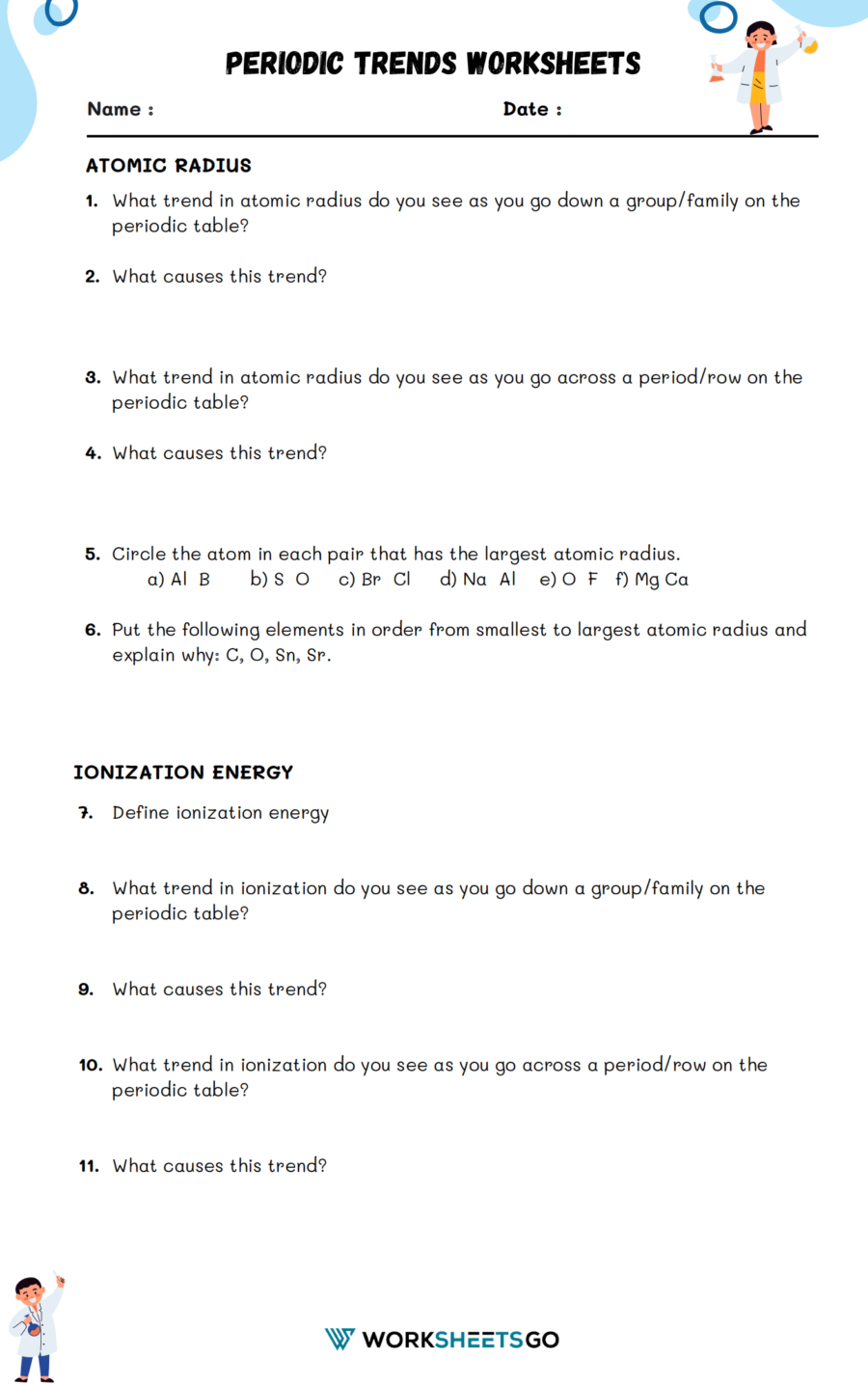
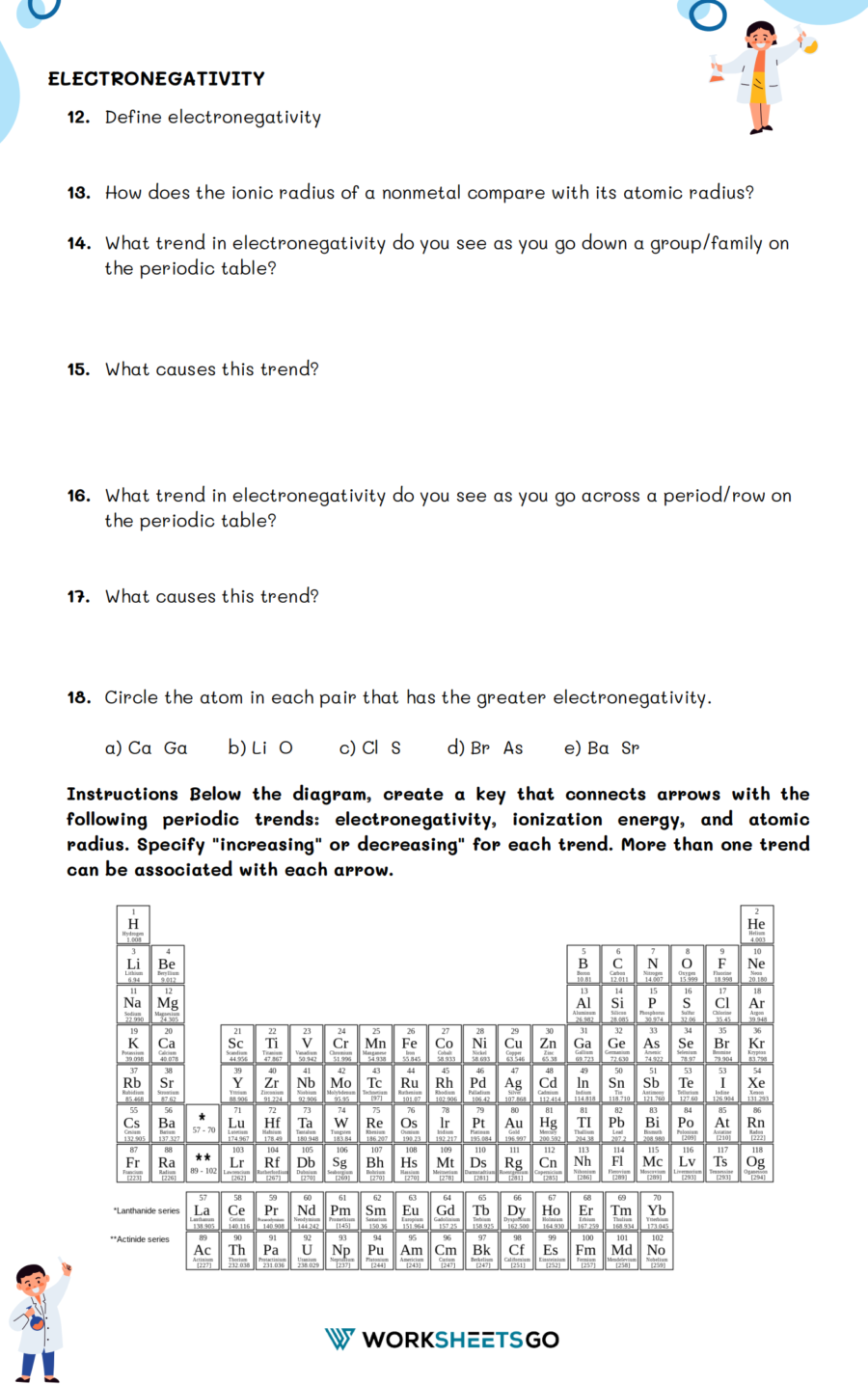
Answer Key
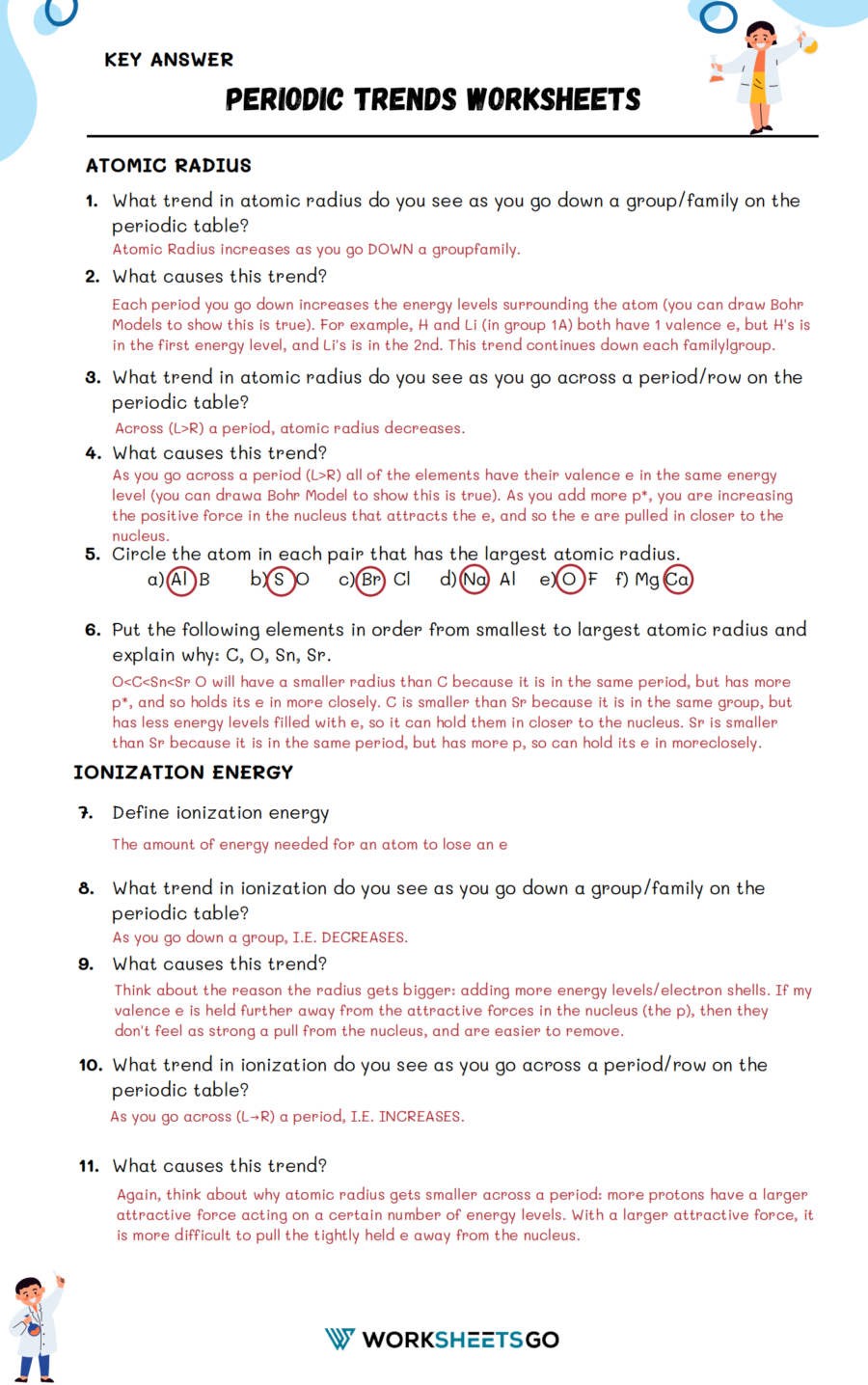

Engaging Activities
- Comparative Analysis: Learners are tasked with comparing atoms in pairs to determine which has the larger atomic radius or greater electronegativity, reinforcing their comprehension of trends.
- Ordering and Reasoning: A thought-provoking exercise has students order elements by atomic radius and explain their reasoning, fostering analytical thinking.
- Visual Learning: An included periodic table visual aids in connecting theoretical knowledge with visual elements, helping students to synthesize information effectively.
Educational Outcomes
- Pattern Recognition: Students will recognize and explain the trends in atomic radius, ionization energy, and electronegativity.
- Analytical Skills: The worksheets are designed to develop students’ abilities to analyze and interpret scientific data.
- Critical Thinking: Through questioning and exercises, students are encouraged to think critically about why these trends occur.
How to Use the Worksheets
- For Teachers: These worksheets serve as a comprehensive teaching aid for introducing or reviewing periodic trends, ideal for in-class activities or homework assignments.
- For Students: They offer a step-by-step approach to mastering periodic trends, useful for both guided and independent study.
- For Parents: Parents can provide these worksheets to their children as an additional resource for at-home learning and revision.
The Periodic Trends Worksheets are an invaluable resource for any chemistry education program. By engaging with these worksheets, students not only learn about the periodic table’s trends but also develop a deeper appreciation for the intricate details that govern the behavior of elements. Perfect for budding chemists, these worksheets transform abstract concepts into tangible learning experiences.



